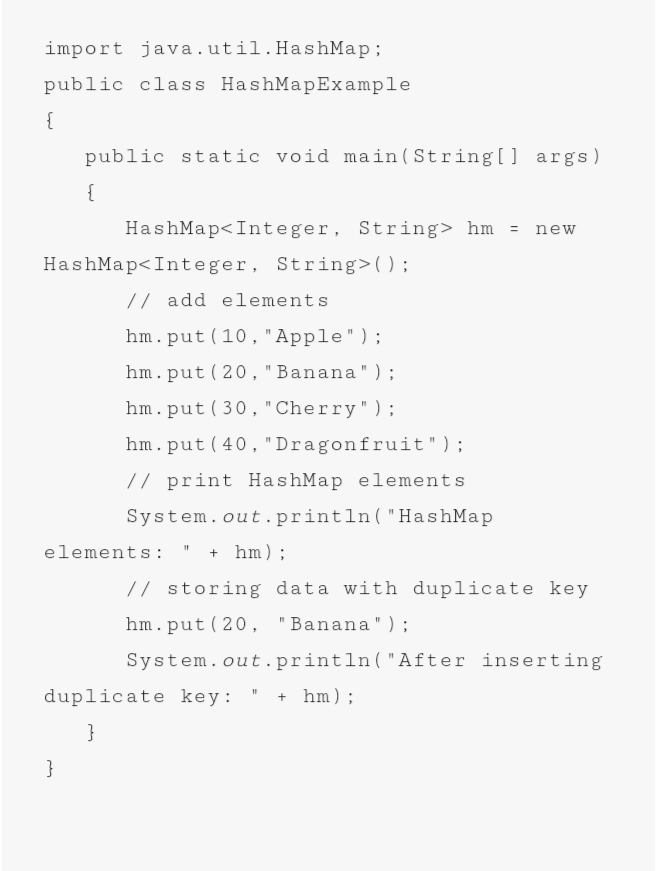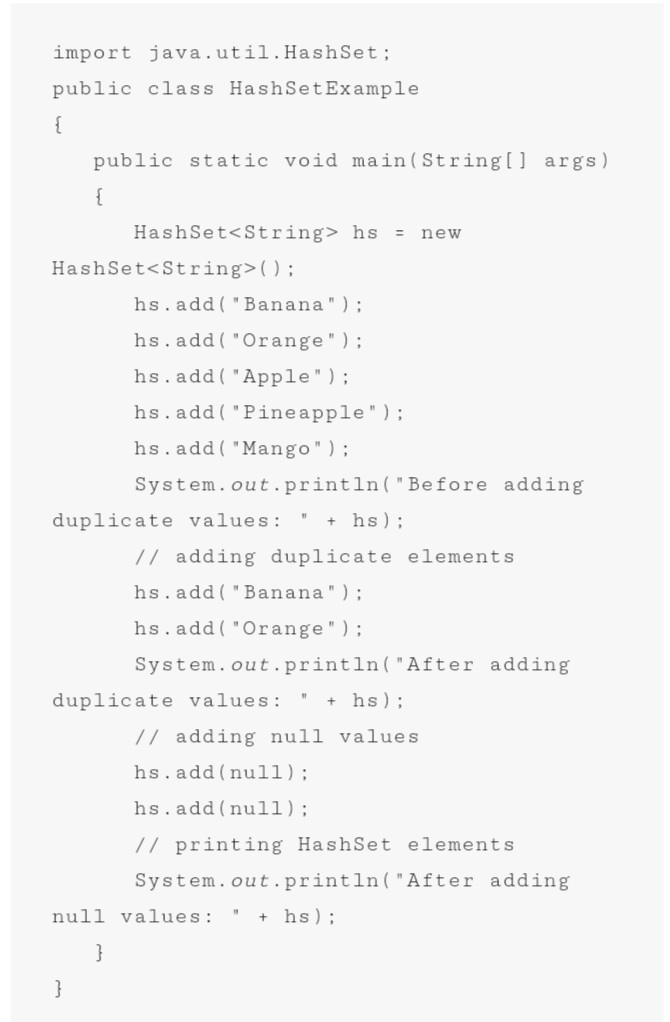What is HashMap?
Java HashMap class implements the Map interface which allows us to store key and value pair, where keys should be unique. If you try to insert the duplicate key, it will replace the element of the corresponding key. It is easy to perform operations using the key index like updation, deletion, etc. HashMap class is found in the java.util package.
HashMap is similar to HashTable, but it is unsynchronized. It allows to store the null keys as well, but there should be only one null key object and there can be any number of null values. This class makes no guarantees as to the order of the map. To use this class and it’s methods, you need to import java.util.HashMap package or it’s superclass.
What is HashSet?
Java HashSet class is used to create a collection that uses a hash table for storage. It inherits the AbstractSet class and implements Set interface.No guarantee is made as to the iteration order of the set which means that the class does not guarantee the constant order of elements over time. This class permits the null element. The class also offers constant time performance for the basic operations like add, remove, contains, and size assuming the hash function disperses the elements properly among the buckets.
Also Read: Difference Between HashMap And HashTable
HashSet Vs HashMap In Tabular Form
| Basis of Comparison | HashMap | HashSet |
|---|---|---|
| Description | HashMap is an implementation of the Map interface. | HashSet is an implementation of the Set interface. |
| Duplicates | It does not allow duplicate keys however it allows duplicate values to be stored. | It does not allow duplicate values. In case the user enters a duplicate value, then the value is overridden. |
| Storage | Values in HashMap are stored in the form of key and value pairs with the help of hashing technique. | A HashMap internally to store it’s objects, i.e. every time a HashMap object is also created with the HashSet object. |
| Null Values | It consists of multiple null values but just a single null key. | It allows only one single null value. |
| Insertion of elements | Insertion of elements into HashMap is done with the help of put(Object key, Object value) method. | Insertion of elements into HashSet is done with the help of add(Object e) method. |
| Performance | HashMap is faster than HashSet as the every value is associated to a unique key. | HashSet is comparatively slower than HashMap as the member object used for calculating hashcode value can be similar for two objects. |
| Usage (when to use) | It is preferred in case uniqueness of elements is not required. | It is preferred in case uniqueness of elements is required. |
| Example | {1=A, 2=E, 3=O}. – Here A,E,O are values and 1,2,3 are the respective keys. | [A, E, U, I, O] – It a set and A,E,I,O,U are the elements in set. |
What you need to know about HashSet
- HashSet stores the elements by using a mechanism called hashing.
- HashSet contains unique elements only.
- HashSet allows null value.
- HashSet class is non synchronized.
- HashSet doesn’t maintain the insertion order. Here, elements are inserted on the basis of their hashcode.
- HashSet is the best approach for search operations.
- The initial default capacity of HashSet is 16, and the load factor is 0.75.
What you need to know about HashMap
- Java HashMap contains values based on the key.
- Java HashMap contains only unique keys.
- Java HashMap may have one null key and multiple null values.
- Java HashMap is non synchronized.
- Java HashMap maintains no order.
- The initial default capacity of Java HashMap class is 16 with a load factor of 0.75.
HashMap Example

HashSet Example

Also Read: Difference Between Iterator And Enumeration
Similarities Between HashMap And HashSet
- Both of these classes do not guarantee that the order of their elements will remain constant over time.
- Both HashMap and HashSet are not synchronized which means they are not suitable for thread-safe operations unitl unless synchronized explicitly.
- They both provide constant time performance for basic operations such as adding, removing element etc.
- If you look at the source code of HashSet then you may find that it is backed up by a HashMap. So basically it internally uses a HashMap for all of its operations.